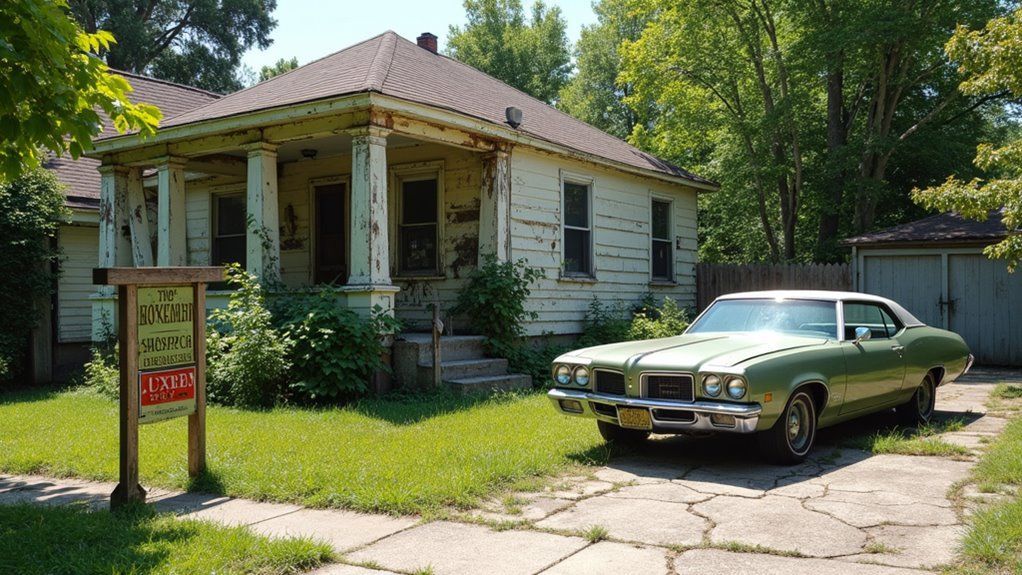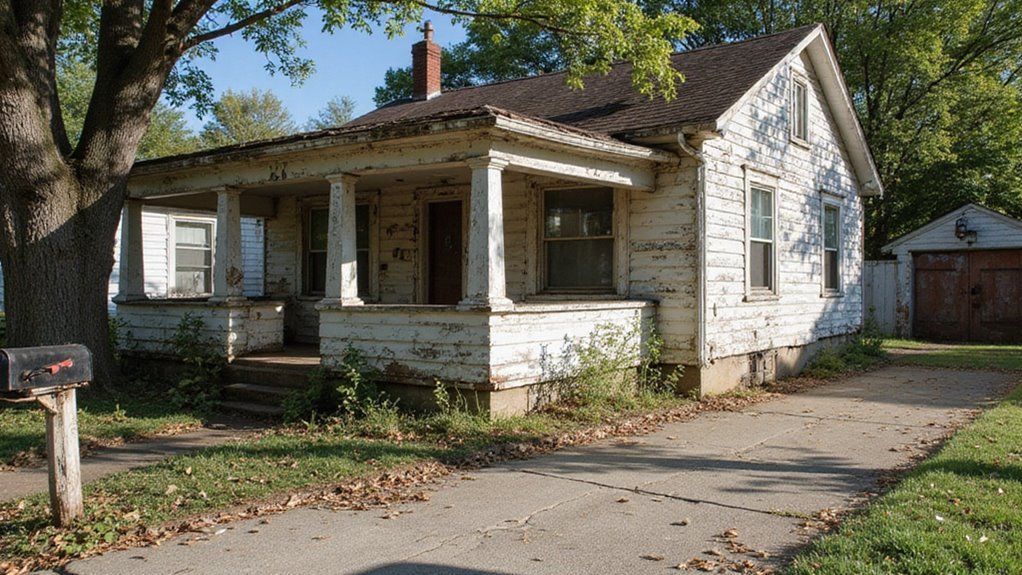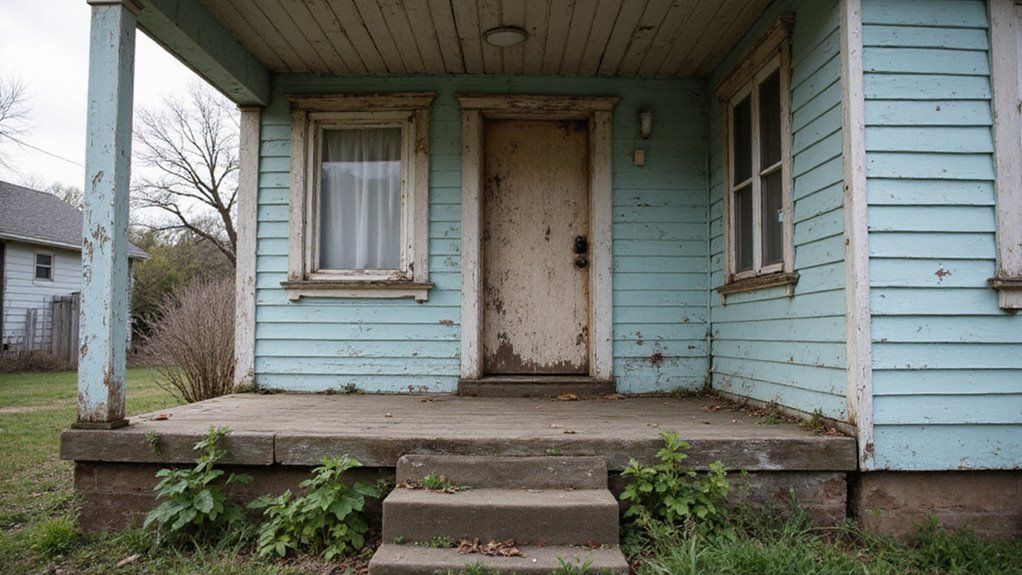Can You Sell a House as Is Without Inspection?

Selling a house “as-is” often feels like walking through a legal minefield for unprepared homeowners. Many sellers worry about inspection requirements, disclosure laws, and potential lawsuits from dissatisfied buyers.
These concerns can turn what should be a straightforward transaction into a stressful ordeal filled with uncertainty. Fortunately, understanding the right approach can save you time, money, and legal headaches.
Yes, you can legally sell a house as-is without requiring a pre-sale inspection, but you must still disclose all known defects honestly. This approach attracts cash buyers and investors while simplifying the selling process.
In this blog I will explore everything related to selling houses as-is without inspections.
Key Takeaways
- Yes, sellers can sell a house “as is” without requiring a pre-sale inspection.
- Disclosure of known defects is mandatory, regardless of inspection requirements, to comply with legal obligations.
- Buyers typically accept the property’s condition without inspections, often relying on disclosures and valuation.
- Conducting a full inspection is optional for sellers but can help manage buyer expectations.
- Local laws, such as in Oklahoma, allow “as is” sales without inspection, but full disclosure remains essential.
What Does Selling a House “As Is” Mean?

Selling a house “as is” means offering your property in its current condition without making any repairs. You won’t fix problems or make improvements before selling.
You must still disclose all known defects according to state law. This approach saves time and money on pre-sale renovations.
The main benefit is a faster, simpler selling process without repair negotiations. However, buyers typically expect a lower price to compensate for potential issues they’ll need to address.
In most cases, your home will attract different buyers than move-in ready properties.
These purchasers often include investors, flippers, and bargain hunters looking for discounted opportunities.
Can You Legally Sell a House Without an Inspection?

In Oklahoma, you can sell a house “as is” without requiring a pre-sale inspection, but you must disclose any known material defects.
State law mandates providing a written disclosure about the property’s condition, but no law requires a private inspection before sale.
Title companies only need a clear title and proper disclosures; skipping inspections doesn’t break the law, but full transparency is essential.
State Laws and Regulations
Oklahoma law allows “as is” home sales in Tulsa without inspections. You must still disclose all known material defects to buyers.
The state requires a property condition disclosure statement for as-is sales. This statement must detail structural problems, hazards, and other significant issues.
Legal consequences can follow if you withhold information about property problems. Transparency protects you from future lawsuits and liability claims.
Moreover, honest disclosure builds trust with potential buyers. Failure to disclose known defects can result in legal action even with as-is sales. Buyers may seek damages for repair costs and other expenses.
Disclosure Requirements
Oklahoma law requires sellers to provide a Residential Property Disclosure Statement even without a home inspection. You must reveal all known property defects honestly.
This disclosure covers structural issues, environmental hazards, and problems with major systems.
Transparency protects both you and potential buyers from future disputes. Complete disclosures reduce your legal liability significantly. Many sellers find that upfront honesty builds trust with serious buyers.
Failure to disclose material defects can lead to lawsuits after closing. The disclosure form serves as documentation that you’ve met your legal obligations.
Title Company Requirements
Title companies verify property ownership legality, not conduct inspections. They ensure all documents meet legal standards for as-is transactions.
Their primary responsibilities include confirming clear title without ownership disputes.
All seller disclosures must be properly completed according to state regulations. They check for liens or financial claims against the property before closing.
Furthermore, title companies follow specific legal protocols for as-is sales transactions.
These professionals facilitate smooth closings by resolving potential title issues early.
With proper title verification, buyers gain protection against future ownership claims.
What Are the Benefits of Selling a House As Is?

Selling your house as is saves you time by skipping repairs and upgrades, letting you close faster.
It cuts costs since you don’t have to invest in fixing issues, and simplifies negotiations with buyers.
Plus, it attracts cash buyers like investors and flippers who are comfortable with properties needing work.
Time Savings
Selling a house as-is saves approximately 4-6 weeks on the typical closing timeline.
You’ll bypass multiple time-consuming steps in the traditional selling process. The inspection phase alone often takes 7-10 days to complete and negotiate.
Cash buyers can close in as little as 7-14 days when purchasing as-is properties. This approach eliminates repair negotiations and waiting for inspection reports.
You also speed up disclosures and reduce approval timelines. Furthermore, investor buyers specifically look for as-is opportunities.
Most as-is sales close 30-50% faster than traditional home sales. As a result, you can move forward with your next chapter sooner.
Cost Reduction
Selling a house as-is cuts repair costs by up to 10-15% of your home’s value. You avoid pre-sale renovations that often run into thousands of dollars. This approach eliminates contractor fees and material expenses completely.
The process becomes faster without waiting for repairs to finish. Most sellers save both time and money through this streamlined approach. Financial resources stay in your pocket rather than going toward fix-up projects.
Cash buyers and investors particularly appreciate this transparent approach. In fact, many investors prefer homes sold as-is because they can calculate returns more accurately.
Simplicity Factor
Selling a house “as is” greatly reduces complexity in the sales process. You’ll skip time-consuming repairs and lengthy inspections. This approach leads to faster closings with fewer negotiations along the way.
Cash buyers and investors often prefer “as is” properties since they know what to expect.
The disclosure process becomes more straightforward without repair contingencies.
You’ll typically complete 50% less paperwork compared to traditional sales.
Furthermore, many sellers report lower stress levels throughout the transaction.
As a result, you can focus on moving forward rather than looking backward at property issues. The entire process serves both parties with honest, transparent terms.
Targeting Cash Buyers
Cash buyers are your best audience when selling a house as-is. These buyers include investors and house flippers who specifically look for properties needing work. They offer several advantages to sellers with distressed homes.
Cash buyers typically close deals faster than traditional buyers. They rarely request repairs or improvements before purchase. Most cash transactions can close in as little as 7-14 days.
Furthermore, these buyers value straightforward dealings and clear property information. To attract them, highlight renovation potential rather than current flaws.
In addition, pricing your property competitively will generate multiple cash offers quickly.
What Are the Potential Downsides of Skipping Inspections?
Skipping inspections can lower your home’s sale price by 10–30% because buyers see more risks.
It also narrows your pool of possible buyers, especially those needing financing or a traditional sale.
Plus, you’ll face tougher negotiations, with buyers pushing for bigger discounts or demanding repairs.
Impact on Selling Price
Pre-sale inspections directly affect your home’s selling price. Skipping inspections typically reduces your final sale price by 10-30% compared to inspected homes.
Buyers view uninspected properties as risky investments requiring additional funds for potential repairs. They often submit significantly lower offers to compensate for these unknowns.
The “as-is” label limits your buyer pool primarily to investors and cash buyers.
Conventional mortgage buyers usually avoid uninspected homes due to lender requirements.
Additionally, negotiations become more challenging when issues are discovered during buyer inspections rather than disclosed upfront.
Limited Buyer Pool
Selling without inspection significantly reduces potential buyers. The pool shrinks to mainly cash buyers and investors.
Traditional buyers with financing typically avoid homes sold as-is due to lender requirements.
This restriction can extend your selling timeline considerably. You might face pressure to lower your price to attract the few interested parties.
Most conventional mortgages require property inspections to approve financing.
Additionally, serious buyers may simply bypass your listing altogether. They often prefer homes with transparent condition reports.
With fewer competing offers, your negotiating power weakens substantially.
Negotiation Disadvantages
Skipping inspections weakens your negotiating position with buyers. When buyers can’t verify a home’s condition, they often request bigger price cuts to offset unknown risks.
You’ll struggle to maintain your asking price without proof of good condition. Buyers typically offer less when they perceive higher risk in the transaction. Most buyers will discount their offers by 5-10% without inspection reports to reference.
Additionally, transactions become more vulnerable to last-minute issues. Without professional documentation, you must rely heavily on disclosure forms, which may not cover everything.
Experienced buyers recognize this advantage and often negotiate more aggressively as a result.
How to Sell Your House As Is Without an Inspection?
To sell your house as is without an inspection, start by setting a sharp, competitive price based on local market analysis.
Then, focus your marketing on investors and cash buyers who are comfortable with fewer inspections, and make sure your disclosure documentation is complete and honest.
Be ready to negotiate offers lower than market value and justify your price with transparent, thorough information about the property’s condition.
Proper Pricing Strategy
Price your as-is property below market value to attract serious buyers quickly. This strategy acknowledges potential repair costs that buyers will face.
Research comparable homes in your area that sold recently without inspections. The data will help set a realistic baseline price.
Many sellers succeed when pricing 5-10% below standard market rates. A real estate agent can provide valuable pricing insights based on local market conditions.
Remember that buyers perceive greater risk with uninspected properties. Your price must offset these concerns.
Be ready to explain your pricing rationale when potential buyers inquire about the property condition.
Marketing to the Right Buyers
Target investors, cash buyers, and house flippers for as-is properties. These buyers understand renovation risks and seek affordable fixer-uppers. Your direct marketing should emphasize the property’s potential and value pricing.
Cash buyers need quick transactions for their investment projects. They typically bypass lengthy financing processes and detailed inspections. This arrangement benefits you by reducing holding time and eliminating repair requests.
Most investors expect a 20-30% discount for properties needing significant work. Your honest presentation about property conditions builds credibility with these experienced buyers.
Furthermore, networking at real estate investment groups can connect you with motivated buyers seeking new projects.
Disclosure Documentation
Accurate disclosure documents protect both sellers and buyers when selling a house as-is. You must reveal all known defects in your Oklahoma property disclosure statement.
Oklahoma law requires sellers to disclose structural problems, past repairs, and environmental hazards. Transparency about roof leaks, foundation issues, or plumbing problems prevents future legal disputes.
Complete disclosure forms thoroughly with dates of previous repairs and inspections. Furthermore, include information about flooding, mold, or pest infestations.
Failure to disclose known issues can result in lawsuits even years after the sale. Honest documentation builds trust and creates smoother transactions for everyone involved.
Negotiation Tactics
Effective as-is property negotiations require complete transparency about condition issues upfront. Set realistic price expectations based on the home’s actual state.
Include a detailed as-is clause in your contract that limits your liability for repairs or defects.
Your bargaining position may be weaker without inspection reports. Prepare documentation of known issues to build trust with potential buyers. Justify your asking price with comparable property data and renovation cost estimates.
Investors and cash buyers often make ideal targets for as-is sales. These buyers typically understand renovation costs and seek discounted properties.
Many will overlook condition issues that would deter traditional homebuyers.
Furthermore, remain flexible on non-price terms to maintain negotiation momentum.
Who Typically Buys Houses Without Inspections?
Typically, cash home buyers, investors, house flippers, and contractors looking for projects buy houses without inspections.
They’re comfortable taking on risks and see value in properties needing work.
If you’re selling as-is, targeting these buyers can speed up the sale and reduce complications.
Cash Home Buyers
Cash buyers purchase houses “as is” without inspections. They want quick transactions without contingencies, making them ideal for inherited properties.
These investors typically seek properties needing repairs. They accept minimal disclosures about property conditions.
Cash buyers make up approximately 25% of all home purchases in the US market. Speed matters most to them—they often close within 7-14 days.
Cash buyers tolerate significant risks other buyers avoid. They purchase directly from sellers, eliminating agent fees.
This arrangement benefits sellers who need to move quickly or can’t afford repairs.
Real Estate Investors
Investors are the most common buyers for “as-is” homes without inspections. They accept properties in their current condition, understanding all potential risks.
These buyers value fast transactions and reduced expenses through simplified processes.
The typical investor uses specialized contracts designed for as-is transactions. This arrangement benefits sellers who want to avoid repairs and lengthy negotiations.
As-is home sales typically close 50% faster than traditional sales. Most investors pay in cash, further speeding up the process.
For sellers seeking convenience, investor buyers provide an excellent option. They eliminate many traditional selling hurdles and complications.
House Flippers
House flippers buy properties “as is” without inspections to renovate and sell for profit. They value speed and low costs when purchasing unrenovated homes.
These investors need quick turnarounds to maximize returns. They typically invest less upfront by accepting properties with potential problems. Their renovation expertise allows them to see value where others might not.
House flippers generally accept unknown defects that would scare away typical buyers.
In many cases, they specifically target motivated sellers who need to close deals quickly. Moreover, they often pay cash to accelerate the process and avoid financing complications.
Contractors Looking for Projects
Established contractors often seek new renovation opportunities to keep their crews busy. They buy distressed properties as potential projects.
Many skip home inspections because they can evaluate problems on their own. Their experience allows them to quickly assess repair costs without formal reports.
Furthermore, these professionals know exactly how to handle structural issues or outdated systems.
Approximately 65% of contractor-purchased homes require electrical or plumbing upgrades.
This expertise gives them confidence when purchasing properties others might avoid. They transform challenging houses into profitable investments through careful planning.
How to Handle Buyer Concerns About No Inspection?
Be upfront with buyers by providing full documentation on the property’s condition, including permits and repair records.
Set clear expectations about the home’s issues and why you’re selling as is, so there are no surprises.
Being transparent helps build trust and reduces the chances of disputes later on.
Pre-Disclosure Strategies
Transparent property disclosure helps buyers feel confident without inspections. Create a property condition addendum that lists all known issues. Share past inspection reports to build trust. Disclose defects honestly to reduce surprises later.
Complete Oklahoma’s Residential Property Condition Disclosure form accurately. Oklahoma law requires sellers to disclose all known material defects. Collect repair invoices and permit documents. Furthermore, organize these records chronologically for easy review.
Explain property issues in plain language during showings. Point out both problems and improvements.
In addition, document how pricing reflects the property’s current condition. This approach protects you legally while serving buyers ethically.
Setting Realistic Expectations
Transparency is essential when selling a property “as is” without inspections. Tell buyers about all known issues upfront. Provide complete disclosure documents that outline property conditions.
Buyers need to understand they’re accepting the property with existing problems. This honest approach builds trust between both parties. It helps prevent misunderstandings later in the transaction process.
Most states require sellers to disclose material defects regardless of “as is” status.
Your transparency protects everyone involved. When buyers know exactly what they’re purchasing, they make informed decisions. This clarity reduces the chance of post-sale disputes or legal complications.
Providing Property History Documentation
Property history documents help buyers feel confident without an inspection. Complete records demonstrate transparency and reduce legal liability for sellers. You should gather all available documentation before listing your home.
Past inspection reports and repair records provide evidence of resolved issues. This history reassures buyers about the property’s condition.
Maintenance logs show consistent care and attention to the property. Furthermore, permit approvals verify that work was completed legally.
A detailed seller’s disclosure statement addresses potential concerns upfront. As a result, buyers can make informed decisions with greater confidence. Every document you provide builds trust in the transaction.
Ready to Sell Your House As Is? Contact Tulsa Home Buyers Today!
You can sell your house as-is to Tulsa Home Buyers today. Local home buyers make the process simple when your property needs repairs. They provide legal protection throughout the as-is selling process. The company offers fair cash deals without lengthy waiting periods.
Most importantly, you won’t need to worry about inspections or making repairs. This arrangement saves significant time and reduces stress during your sale.
Furthermore, the transaction remains transparent from start to finish. Oklahoma law allows as-is home sales with proper disclosure requirements.
Frequently Asked Questions
Are There Any Legal Risks for Sellers When Not Conducting Inspections?
You face legal risks if you don’t disclose known defects when selling as-is, which can lead to lawsuits or penalties. Be transparent, provide full documentation, and ensure disclosures are accurate to protect yourself and serve your buyers responsibly.
How Does Selling “As Is” Impact Property Value in Tulsa?
You should know that selling “as is” in Tulsa can lower your property value by 10–30%. While faster and cheaper, you attract fewer traditional buyers, so focus on cash investors and be transparent to protect yourself legally.
Can I Still Get Financing Without a Home Inspection?
You can get financing without a home inspection, but lenders often require one to ensure the property’s condition. Be upfront with buyers, understand lender requirements, and consider targeting cash buyers or investors who don’t need inspections.
What Disclosures Are Required When Selling “As Is” in Oklahoma?
You must disclose known material defects through Oklahoma’s Residential Property Condition Disclosure Statement, even when selling as is. Honesty protects you from legal trouble, builds trust, and ensures buyers understand the home’s true condition upfront.
How Do I Protect Myself From Future Legal Liabilities?
You protect yourself by providing full, honest disclosures, documenting known defects, and maintaining transparency. Be upfront about issues, supply repair history, and ensure your disclosures are complete—this minimizes future legal risks and builds trust with buyers.
This is paragraph text. Click it or hit the Manage Text button to change the font, color, size, format, and more. To set up site-wide paragrapTulsa Home Buyers • October 2, 2025h and title styles, go to Site Theme.
Ready to work with Tulsa Home Buyers?
Let's connect! We’re here to help.
Send us a message and we’ll be in touch.
Or give us a call today at 111-222-3333


